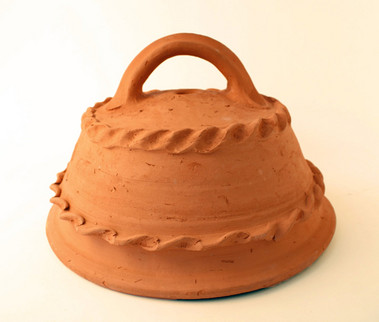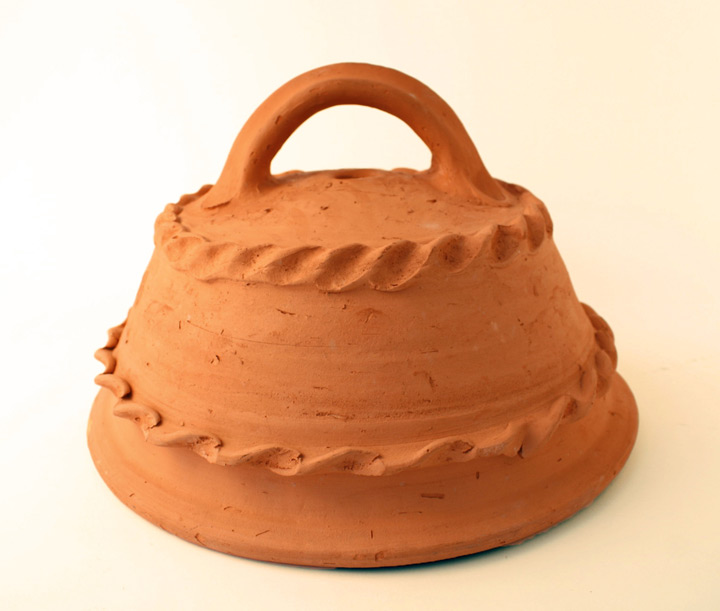Curfew, Fire Cover, Medieval, Replica
This object is made from unglazed terracotta clay. It is a large domed lid with a handle and a hole pierced in the top. It looks a bit like a food cover, perhaps because the fluted decoration around the edges makes it look a bit like pastry. But this unusual object had an important function to prevent fire in medieval times. Its name also has an interesting origin…
In medieval times a bell would be rung in the evening as a signal that everyone must go to bed. This was known as the curfew and meant that people should cover their fires. If the fire was covered by a protective guard it would smolder safely throughout the night and could be easily re-ignited the next morning. The hole in the lid of the cover meant that oxygen could still get into the fire and it wouldn’t go out altogether.
In those days most structures were made of wood and fire damage was a major problem in towns and villages. The word curfew derives from the French couvre-feu (cover fire). So, the fire cover became known as the curfew.



This object is made from unglazed terracotta clay. It is a large domed lid with a handle and a hole pierced in the top. It looks a bit like a food cover, perhaps because the fluted decoration around the edges makes it look a bit like pastry. But this unusual object had an important function to prevent fire in medieval times. Its name also has an interesting origin…
In medieval times a bell would be rung in the evening as a signal that everyone must go to bed. This was known as the curfew and meant that people should cover their fires. If the fire was covered by a protective guard it would smolder safely throughout the night and could be easily re-ignited the next morning. The hole in the lid of the cover meant that oxygen could still get into the fire and it wouldn’t go out altogether.
In those days most structures were made of wood and fire damage was a major problem in towns and villages. The word curfew derives from the French couvre-feu (cover fire). So, the fire cover became known as the curfew.




















